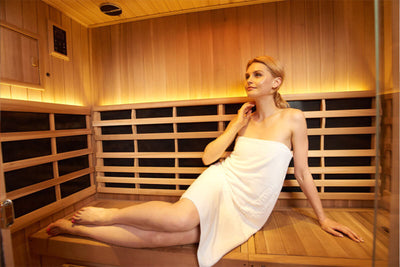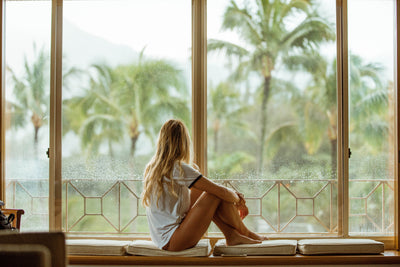Three standout spaces from our travels so far

Having been on the road for nearly 7 months now, Conscious Spaces founders Tara and Darren have stayed in some remarkable places. From nature-immersed, curve-filled casitas in the Mexican jungle to open and airy villas by the beach in Peru, Tara talks us through three of the standout spaces – and the wellbeing benefits they offer...
Paula’s Casita - Bacalar, Mexico



“A 15-minute drive from Bacalar town along a wild jungle road, Paula’s house overlooks Laguna Bacalar (The Lagoon of the Seven Colours), making you feel completely immersed in nature. Even though there’s a chorus of wildlife going on all night, it actually helped me to sleep and I felt really well-rested during our stay here.
 The house is 100% off-grid and solar-powered (I will discuss the issues from solar another time!), but the most unique thing about it is its design. From the egg-shaped doors to the rounded walls, kitchen counters and circular windows, there are curves and softened corners everywhere. With its lack of harsh lines and angles, it gave new meaning to the phrase ‘think outside the box’; that idea of curves and circles bringing balance and freedom. You can really feel it in Paula’s Casita - it’s a feel-good space. And because you can see right up into the rafters, you never feel enclosed.
The house is 100% off-grid and solar-powered (I will discuss the issues from solar another time!), but the most unique thing about it is its design. From the egg-shaped doors to the rounded walls, kitchen counters and circular windows, there are curves and softened corners everywhere. With its lack of harsh lines and angles, it gave new meaning to the phrase ‘think outside the box’; that idea of curves and circles bringing balance and freedom. You can really feel it in Paula’s Casita - it’s a feel-good space. And because you can see right up into the rafters, you never feel enclosed.
A lot of thought has gone into the house, with local natural materials, wooden shutters, handmade textiles, hammocks and dimmed light giving a minimal Mexican vibe.
Just remember to bring your bug spray!”
Nature Villa - Mancora, Peru

“After coming from cold and damp conditions in Cornwall, England - it was a breath of fresh air to arrive somewhere so dry and warm. A wonderful sea breeze blows right through the building.


 The kitchen and downstairs bathroom are open to the elements. I loved how, to reach the kitchen, you had to walk outside, down some stepping stones. The whole place has this real sense of flow between outside and inside. It feels connected to the natural world.
The kitchen and downstairs bathroom are open to the elements. I loved how, to reach the kitchen, you had to walk outside, down some stepping stones. The whole place has this real sense of flow between outside and inside. It feels connected to the natural world.
There are also no glass windows (only mosquito mesh), just open-air views of the surrounding trees and the ocean beyond. Outside the bedrooms, a viewing deck overlooks the beach below. It’s the perfect spot for watching sunsets and spotting whales. Because there aren’t any windows, you get all that lovely natural light directly in your eyes. And, apart from camping, this windowless villa is one of the few places I’ve ever stayed where I’ve become properly attuned to the rhythms of the day and night, dark and light.
The longer we stayed, the more nature seemed to come to us. A little family of foxes started visiting us each night. They’re tiny - very different from foxes at home. They were fascinated by our masks and snorkels, and we loved watching them play with them. That connection with local wildlife was very special.”
Casa Origen - Bacalar, Mexico




“We stayed here for a few months - so enough time to get to know the local community and settle into our surroundings.
The owners have done such an incredible job sourcing and using local, natural, sustainable materials and techniques. The result is simple but beautiful interiors that celebrate tradition and longevity yet feel clean and contemporary. It’s not ‘decorative’, because the beautiful materials are the decoration.
The walls are made with local soil, which gives a rustic, clay-like finish. All of the furniture is handmade using local, sustainable wood, and of course, there’s no carpet, so it’s just so easy to maintain.
The woven chairs are made by a local artisan using a unique weave, which looks like it would stretch and lose its shape, but is actually incredibly strong. Unlike cheap, mass-produced furniture, the pieces in this house won’t degrade - they’ll only get more characterful over time. I love that philosophy: that wear and tear only enhances beauty. I don’t like going to places where everything looks so perfect you feel like you can’t touch anything. Furniture should be used, loved and if possible handed down through generations.”










































